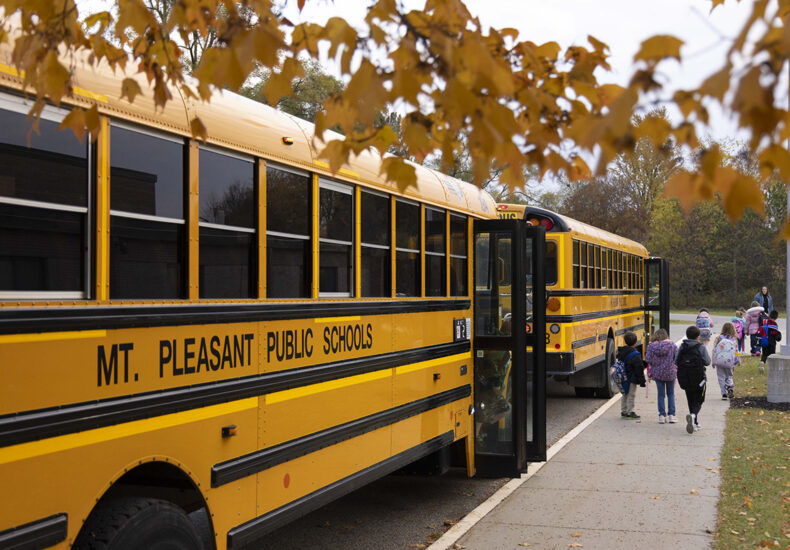
Michigan absenteeism FAQ: Who’s to blame? What are penalties to schools, kids?
What to Know About Absenteeism: Definition, Differences from Truancy, and the Role of Parents
Understanding the Issue
Educators agree that chronic absenteeism is a huge problem in Michigan schools, impacting learning and dragging down test scores—even for students who regularly show up to class. In 2024, Michigan ranked among the lowest in the nation for fourth-grade reading scores, with only six states scoring lower on the National Assessment of Educational Progress. That same year, Michigan had the worst rate of students habitually missing school in the Midwest and one of the highest rates nationally.
Although absenteeism rates have dropped for three consecutive years, the problem remains acute: 28% of Michigan students missed 10% or more of their school year last year—that’s at least 18 days.
“Michigan needs to be clear that this is a problem for us and an opportunity to solve,” said Venessa Keesler, president and CEO of Launch Michigan, a bipartisan school reform group.
How Bad Is Absenteeism?
Last year, more than a quarter of Michigan students—nearly 388,000—were considered “chronically absent.” This includes both excused and unexcused absences, ranging from sickness and appointments to skipping school without parents’ knowledge. Before the pandemic, there were 290,000 chronically absent students, which was 19.7% of public school students.
Whose Fault Is It?
Educators say the causes are complicated: poverty, lack of transportation, cultural shifts, and family priorities all play a role. Ultimately, though, for younger children, parents bear much of the responsibility.
Midland’s Central Park Elementary School Principal Chelsea Sauve noted that attitudes changed during the pandemic. For example, quarantine protocols allowed children to be home for ten days—setting a precedent that long absences are acceptable.
At Everett High School, staff visit students’ homes to understand why students aren’t attending school and to share attendance data. District students are eligible for free city transportation cards and gas cards to ease the commute.
“In Lansing, we give you so many opportunities to get to school,” said Billy Hastings, community engagement specialist and assistant football coach.
Is Absenteeism the Same as Truancy?
No. Chronic absenteeism includes both excused and unexcused absences. Michigan does not have a standardized definition of truancy, according to Midland Probate and Family Court Judge Angela Cole.
Michigan courts can prosecute parents or students for poor attendance, but many argue that court involvement is not an effective way to improve attendance. School leaders report that students rarely face court punishments.
Notably, lawmakers in 2020 removed the minimum number of days a parent could be jailed over attendance issues.
Attendance’s Impact on Student Performance
Michigan lacks a statewide analysis on how absences affect learning, but neighboring Indiana has found that test scores start to decline once attendance drops below 94% over the school year—that equals about 10 days in a 180-day year.
“Every day you miss matters,” said Sarah Lenhoff, an education associate professor at Wayne State University and co-author of the book Rethinking Chronic Absenteeism.
Required School Days and Instruction Hours
Schools in Michigan are required to offer at least 1,098 instructional hours and 180 days of pupil instruction in a calendar year. However, this is complicated by exemptions. For instance, students don’t necessarily have to be physically present for days to count toward this requirement.
Districts receive credit for professional development days where teachers improve their skills. More recently, districts have been allowed to count virtual instruction days as part of instructional hours.
Michigan used to require schools to report annual instruction hours to the state, but now calendars only go to local intermediate school districts. Former state superintendent Michael Rice repeatedly called for laws to prevent professional development and virtual days from counting as instructional hours. The state’s most recent budget blocks virtual days from counting.
Who Sets Student Attendance Policies?
Michigan law mandates that students ages 6 to 18 attend public school unless they are homeschooled or attend private school. However, local school districts set their own policies about what qualifies as excused or unexcused absences. They also determine when to contact parents or involve outside entities, such as local courts for truancy proceedings.
What Is Michigan Doing to Address Chronic Absenteeism?
At the school level, principals and superintendents commonly call or send letters to parents when students repeatedly miss school. Attendance teams within schools analyze attendance trends and brainstorm ways to help students attend more consistently.
At the state level, districts can participate in the Early Warning Intervention and Monitoring System (EWIMS), which analyzes data to provide support for students at risk of dropping out. Coaching is available to districts that join the program.
Additionally, the state has allocated $5 million over five years to fund a new data system for tracking attendance, student behavior, and course completions. About 60 districts are piloting this program in partnership with the Michigan Association of Intermediate School Administrators (MAISA).
Funding has also been provided for dropout recovery programs. The Michigan Department of Education requires Partnership districts—low-performing districts receiving additional support—to set academic goals for improving graduation rates, reducing class sizes, and increasing attendance in 2024.
Have Lawmakers Taken Action?
Not significantly. Unlike many other states, Michigan has not enacted major reforms on student attendance since the pandemic.
Senator Dayna Polehanki (D-Livonia) expressed interest in making chronic absenteeism a policy priority but acknowledges that legislation has yet to take shape.
A survey of Michigan school leaders found that roughly one-third view chronic absenteeism as a top three priority for the 2024-2025 school year.
How Does Michigan Compare to Other States?
Many states have yet to release updated absenteeism data. Among Midwestern states, Iowa reported a chronic absenteeism rate of 15%. The Return to Learn Tracker offers comparative data on absenteeism rates by state.
Are There Penalties for Schools with Low Attendance?
Yes. In the last school year, 162 Michigan school districts (59 traditional and 103 charter schools) faced potential financial penalties because on certain school days fewer than 75% of students attended. These low-attendance days occurred 873 times—down from prior years but still more than double the 406 such days recorded in 2018-19.
In five charter school districts, the 75% attendance threshold was not met for at least 22 days. Global Heights Academy of Dearborn Heights reported 37 such days, including one when fewer than half of its 244 students attended.
State education officials have not yet calculated how much funding was reduced due to these attendance shortfalls. The state does not receive accurate attendance day data until August 1, nearly two months after the school year ends.
According to Ken Coleman, spokesperson for the Michigan Department of Education, these days cost districts approximately $11.5 million in funding for the 2024-25 school year.
Conclusion
Chronic absenteeism remains a significant challenge for Michigan’s education system, affecting student learning, test scores, and school funding. While the issue is multifaceted—rooted in socioeconomic factors, transportation, and family engagement—it requires clear attention and coordinated efforts from parents, educators, and policymakers to improve student attendance and, ultimately, student outcomes.
https://bridgemi.com/talent-education/michigan-absenteeism-faq-whos-to-blame-what-are-penalties-to-schools-kids/
You may also like
You may be interested
Globe bets on prepaid fiber, sets expansion
No content was provided to convert. Please provide the text...
Bragging rights up as Samal makes 5150 debut
A stellar Open division field will be shooting for the...
DigiPlus launches P1-M surety bond program
MANILA, Philippines — DigiPlus Interactive Corp. has partnered with Philippine...



Leave a Reply